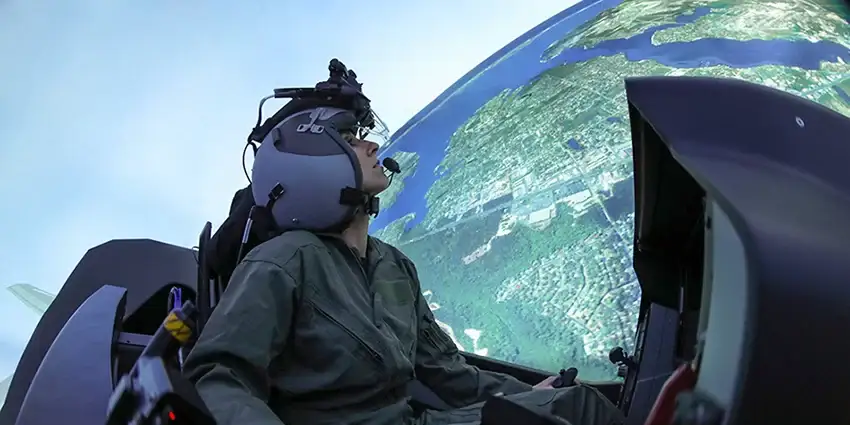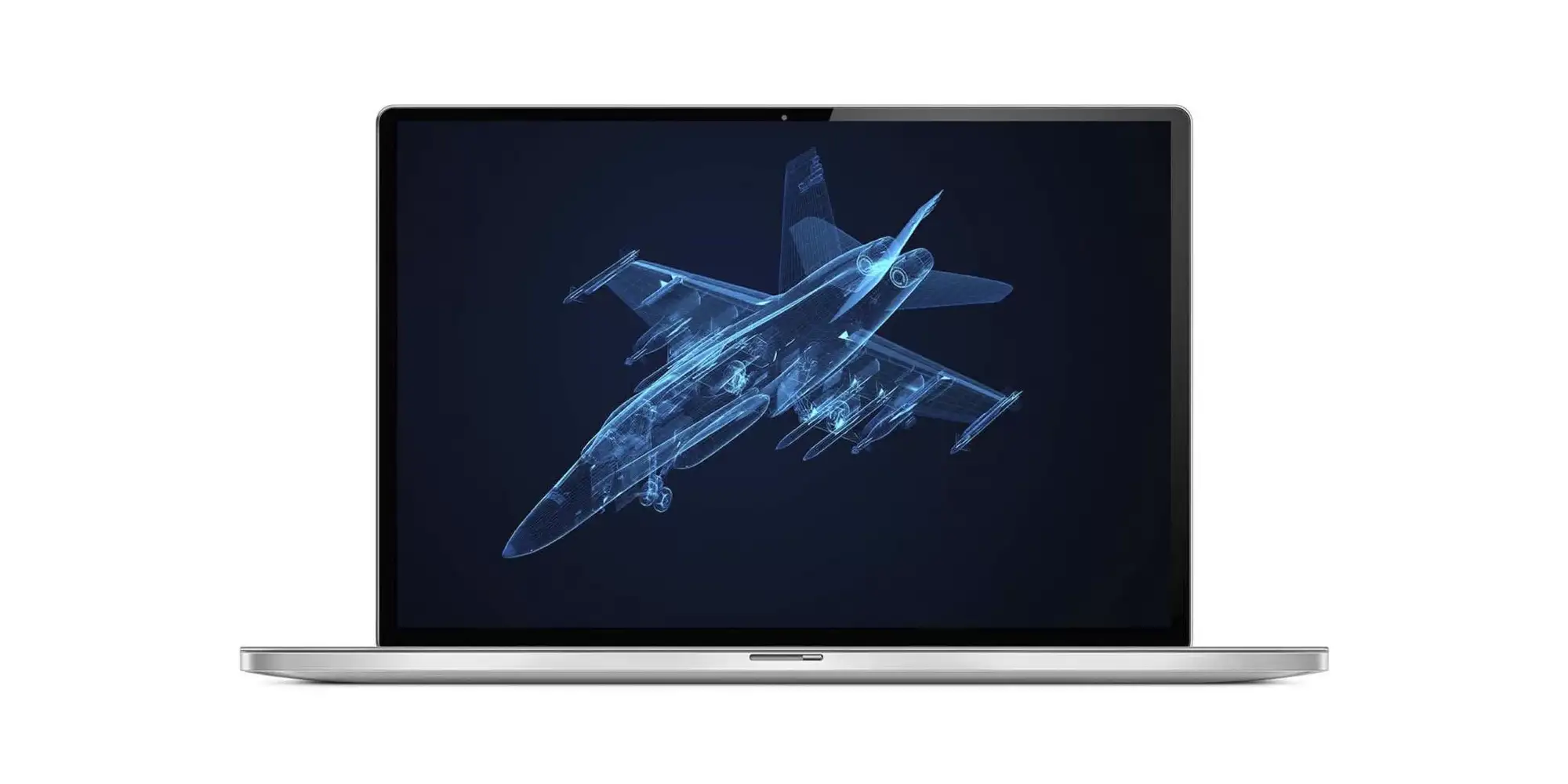Stirling Dynamics Announces New Agreement with Lockheed Martin
Stirling Dynamics has agreed on a new long-term supplier agreement with Lockheed Martin (Rotary Missions and Systems) to supply the F-35 stick and...
During the Farnborough International Airshow 2022, Stirling Dynamics’ eVTOL Business Manager, Simon Hancock, delivered the keynote speech “Rethinking Aerospace Engineering – Making Advanced Air Mobility a Reality”. Simon’s speech discussed the evolution of conventional aircraft and made insightful comparisons with Advanced Air Mobility (AAM) and the challenges that the aerospace sector faces today. Here is a transcript of the keynote speech.
For most of us working in the aerospace industry today, the changes to aircraft designs that we’ve seen have been subtle; the first mass passenger aircraft was developed in the 1920s, and by the 1950s (once jet engines were developed) an optimal configuration was designed and has remained in place ever since. There is a standard design for large airliners, a standard design for business jets, there’s a little more variation in general aviation, and so on. But, if you look at an airliner from the 1960s and one today, they don’t look very different.
But it wasn’t always like that. Going back to the 1910s, there were all sorts of ideas for aircraft concepts and a variety of different start-ups trying to get into the business – some worked, and some didn’t. Of course, back then, failures were a lot less visible, and the public acceptance of risk was very different.
What’s happening today with AAM? As we saw 100 years ago, there are many ideas from different companies and a range of configurations. They may be targeting slightly different markets, but the basic idea is the same – carrying a small number of people, relatively short distances with zero emissions, targeting the inefficiencies in our current transport system.
In terms of innovation and new entrants to the market, we’re back in the 1920s again. But are we going to converge faster now? Will we end up with a similarly small number of designs? Who knows? And it’s not just a step change for the manufacturers and the future passengers. These fast-paced changes in design and innovation will inspire the next generation of engineers to get involved, as we saw decades ago with the space race and Concorde.
These fast-paced changes in design and innovation will inspire the next generation of engineers to get involved, as we saw decades ago with the space race and Concorde.
As aerospace engineers, we have built up the process and procedures and we have a settled certification framework. Now it’s all different, and that brings a lot of challenges. All-electric aircraft, flying around in urban environments at lower altitudes with a planned production rate that’s only ever been seen before with automotive and consumer electronics. There’s also a demand for much shorter development timescales. All these elements present their challenges, and we need to deal with them at the same time.
For the more conventional aircraft we looked at earlier, there are decades of corporate knowledge and lessons learned to fall back on. We have aerodynamic and structural models and analysis tools to compare our new design against and gain confidence in our processes. With such new concepts, we do not have the history and the models in place, so we are (almost) starting from scratch. We are integrating many new technologies into configurations that have never existed before, operating in different environments – all with the prime focus on safety and trying to comply with regulations, which are constantly evolving.
All-electric aircraft, flying around in urban environments at lower altitudes with a planned production rate that’s only ever been seen before with automotive and consumer electronics. There’s also a demand for much shorter development timescales. All these elements present their challenges, and we need to deal with them at the same time.
It is not just challenging for the designers. It’s a tough job for the regulators too. Considering all the new designs with so many different operating regimes, it is difficult to develop a simple set of rules to follow. Maybe CS23, CS27 or somewhere in between? The sensible fallback would be to prove your design is safe before you fly it, but how when then there are no previous examples or validated models to refer to? The regulators are not in a position to dictate a set of rules, so they are asking the designers to prove their designs are safe. It’s a chicken and egg scenario.
We used to proceed through careful, incremental development, proving one aspect at a time through physical testing, but these new programmes are more likely to rely on virtual testing and digital twins.
By scale, we mean people, processes and even manufacturing. The aerospace industry is ramping back up to normal post-Covid levels, and the demand for ‘conventional’ aircraft is still increasing. Now we have more entrants to the market, drawing on the same resources to design and build their aircraft.
And it’s not just the engineers, this problem applies to parts and manufacturing. The total output of “general” aviation aircraft is a few thousand a year. If the predictions we are hearing this week are correct, the AAM sector will be building tens of thousands of aircraft a year. If this is correct, the scale of manufacturing components and composite structures will have to increase dramatically.
Therefore, we will need to expand the aerospace supply chain to deliver at a scale more like the automotive industry (unprecedented in aerospace). All this while the ‘conventional’ aerospace industry continues to grow, and automotive manufacturers are struggling to keep up with demand for their new electric cars, so we need to be more aware of design for manufacture and advanced manufacturing processes.
If the predictions we are hearing this week are correct, the AAM sector will be building tens of thousands of aircraft a year.
So, exciting, but challenging times ahead. What do we do now?
This gets to our main theme. Previously, we could build aircraft with a main prime, a few Tier-1 suppliers and smaller suppliers supporting them. All this with clear requirements flowing down from the top. That’s not going to work in this new world. To achieve these goals, we need to build more partnerships. The knowledge is out there, so we need to be better at working together.
The future can’t be like the ‘old aerospace’ where established primes can create detailed requirements for suppliers to follow. The new primes need to look to the supply chain for innovation and expertise, not just capacity. Bring your best suppliers on board earlier in the development process. Most suppliers will have worked for multiple aerospace customers and have lots of expertise to draw on – that diversity of thought can be extremely useful! This new relationship can’t just be one-sided – the supply chain needs to be prepared to challenge the prime, take more responsibility and offer innovative solutions. This openness and trust between primes and suppliers must be in place so we can form successful partnerships, and this can be a bit of culture change for some organisations.
A great example is the recent strategic agreement between Spirit AeroSystems and Expleo, two companies bringing their capabilities together and pushing what we used to think of as the classic customer-supplier relationship. These long-term relationships allow us on the supply side to invest in our capabilities and provide better long-term support to the primes.
I also think these new programmes can inspire another generation of young people to get into aerospace (as we saw previously with the space race and with Concorde), but it is going to take some time before these new engineers come online. Therefore, we need to make the best use of what we already have in the industry.
The future can’t be like the ‘old aerospace’ where established primes can create detailed requirements for suppliers to follow. The new primes need to look to the supply chain for innovation and expertise, not just capacity. Bring your best suppliers on board earlier in the development process.
It’s an incredibly exciting time to be involved in the aerospace industry, but there are some tough challenges ahead to get over the line. However, if we’re smart about using the available resources, we can get there.
Stirling Dynamics is part of Expleo Group, to learn more about our electrification solutions, visit: https://expleo.com/wp-content/uploads/2022/07/electrification-offer.pdf

Stirling Dynamics has agreed on a new long-term supplier agreement with Lockheed Martin (Rotary Missions and Systems) to supply the F-35 stick and...

In simple terms, Model-based systems engineering (MBSE), sometimes called Model-based design (MBD), is not only the use of models within the...
Bristol, UK, June 21, 2023 – Stirling Dynamics today announced it has entered into a Memorandum of Understanding with Triumph Group, Inc., (TRIUMPH)...